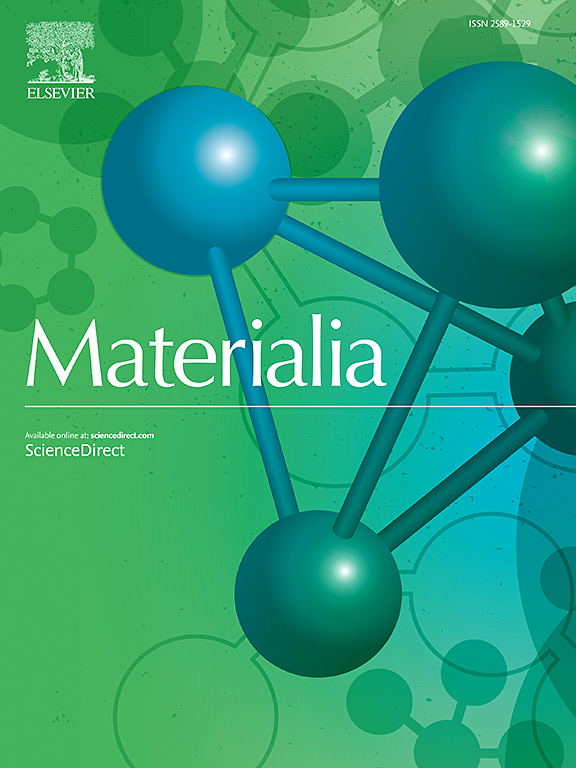同轴线材-激光增材制造过程的多物理场模拟及微结构预测
IF 2.9
Q2 MATERIALS SCIENCE, MULTIDISCIPLINARY
引用次数: 0
摘要
本文研究了线激光增材制造(WLAM)过程中的传热、流体流动和微观结构形成的数值模拟。研究了三光束WLAM结构,其中主激光被分成几个等效光束,这些光束同轴汇聚在馈线进入熔池之前加热馈线。数值模拟在水平集框架下进行,采用具有周期性自适应网格划分的非结构有限元。提出了一种新颖的方法,避免了对送丝的显式描述。相反,在熔池内定义了一个体积源域,其中施加了特定的速度场。该速度场考虑了入射金属丝的冲击效应,并由质量进料速率导出了正散度。同时,对热方程的右边进行了修改,以考虑由于被加热的金属丝下降而产生的能量输入。此外,在有限元分析中结合元胞自动机方法,基于凝固阶段温度场的演变,通过基底外延生长来预测晶粒结构的发展。将所开发的耦合方法应用于IN718在同一合金衬底上的单道沉积。讨论了工艺参数对焊头形貌、微观组织演变和织构形成的影响。本文章由计算机程序翻译,如有差异,请以英文原文为准。

Multiphysics simulation and microstructure prediction of coaxial wire-laser additive manufacturing process
The paper addresses the numerical modeling of heat transfer, fluid flow and microstructure formation in the wire-laser additive manufacturing (WLAM) process. The three-beam WLAM configuration is studied, where the primary laser light is divided into equivalent beams which coaxially converge to heat the feeder wire just prior its plunging and melting into the melt pool. The numerical modeling is conducted in a level set framework, using unstructured finite elements with periodic adaptative remeshing. An original method is proposed to avoid an explicit description of the feeding wire. Instead, a volume source domain is defined within the melt pool, where a specific velocity field is imposed. This velocity field accounts for the impingement effect of the incoming wire, and has a positive divergence derived from the mass feeding rate. At the same time, the right-hand side of the heat equation is modified to account for the input of energy due to the plunging of the heated wire. In addition, a cellular automaton method is coupled within the finite element analysis to predict grain structure development, by epitaxial growth from the substrate, based on the temperature field evolution during the solidification stage. The developed coupled methodology is applied to single-track deposition of IN718 on a substrate made of the same alloy. The influence of process parameters on bead morphology, microstructure evolution and texture formation are presented and discussed.
求助全文
通过发布文献求助,成功后即可免费获取论文全文。
去求助
来源期刊

Materialia
MATERIALS SCIENCE, MULTIDISCIPLINARY-
CiteScore
6.40
自引率
2.90%
发文量
345
审稿时长
36 days
期刊介绍:
Materialia is a multidisciplinary journal of materials science and engineering that publishes original peer-reviewed research articles. Articles in Materialia advance the understanding of the relationship between processing, structure, property, and function of materials.
Materialia publishes full-length research articles, review articles, and letters (short communications). In addition to receiving direct submissions, Materialia also accepts transfers from Acta Materialia, Inc. partner journals. Materialia offers authors the choice to publish on an open access model (with author fee), or on a subscription model (with no author fee).
 求助内容:
求助内容: 应助结果提醒方式:
应助结果提醒方式:


